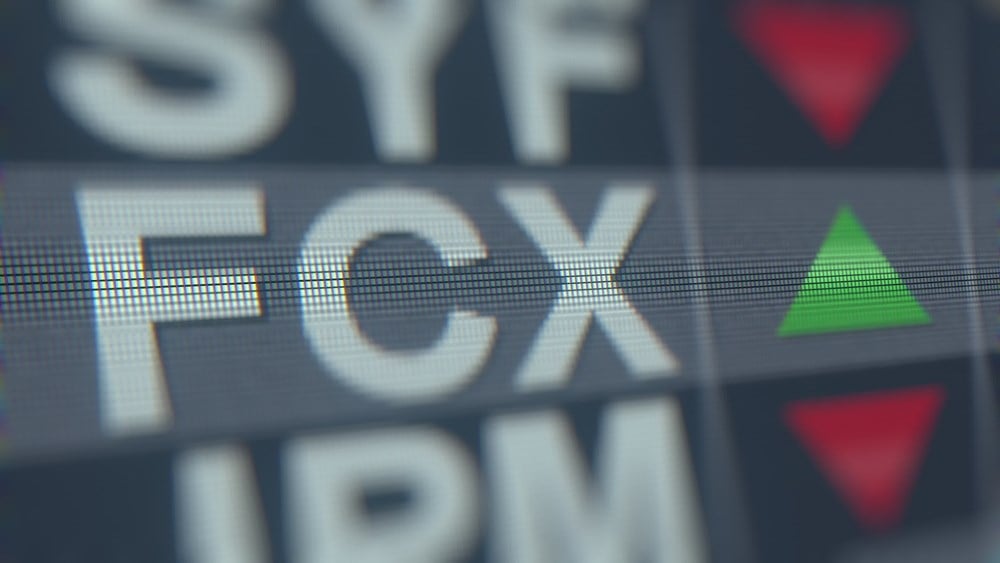
A vast population of market participants seems to be focused on the hype and growth potential that electric vehicles are bringing to light, however as the space is filled by companies that may or may not survive the "growth" stage or ever see profitability in their operations, investors may be better served by considering the industries up the stream that ends up feeding the frenzy to join the electric vehicle race.
Looking at the Californian gold rush, some bought the shovel to take their chances on digging up gold, and some sold the shovels and assumed no risk of coming up empty at the mines.
The equivalent of a shovel-selling company that feeds the gold rush participants is found in the primary metals miners, such as those operating in the spectrum's copper and lithium side. Freeport-McMoRan (NYSE: FCX) is one such player supplying various clients with copper, gold, and molybdenum.
However, as the company reported earnings last Friday, some speculate that the firm will not see the massive growth and profitable prospects in 2023 as those experienced in 2022. Freeport-McMoRan analyst ratings are placing some downside from current prices and rating the stock an overwhelming "hold" where it used to be a "buy" as recently as August 2022.
The Pendulum Swings
Looking at the FED's readings on capacity utilization for specific industries may give investors some context as to where Freeport-McMoRan may be positioned with regard to the commodity business cycle. For example, while the United States' overall capacity reading sits at 79.8% today, the mining industry has been showing readings above 90% since January, though slower since closing March's figure at 91.1%.
The average reading for the mining industry has been 86.4% from 1972 to 2022, so operating at a 90% plus rate is undoubtedly a signal of over-extension across the board.
Looking at the slowdown from January to March within the mining industry's capacity reading (which can act as a proxy for supply and demand balances) can be interpreted as a slowdown in business. The connection is within Freeport-McMoRan's revenue growth rates for the period. At the same time, the company enjoyed a 60.9% revenue growth for 2021 and a relatively flat year in 2022. The latest quarterly results show a pivot in the revenue direction for Freeport-McMoRan's financials will show that, on an annual basis, the first quarter of 2023 revenue declined by 18.4% as not only volumes declined, but the open market prices of copper took a plunge from $4.90 per pound in February 2022 down to $3.25 per pound in August 2022, to a swift recovery in 2023 toward $3.97.
However, this recovery in the primary metal was not enough to offset the firm's volume contraction.
Following the decline in open-market prices for Copper, and the subsequent fall in revenues, came the compression of gross, operating, and net margins. Starting with an 11% increase in the cost of production and delivery, Freeport-McMoRan's gross profit margin declined from 44.9% in 2022 down to 33.9% in 2023. Additional administrative costs, exploration costs, and environmental obligations as the company pushes for ESG compliance brought operating margins down to 29.7% from 42.5%, where historically, these levels have represented the retreat of a peak in the profitability cycle.
Lastly, net margins contracted by 10.8% to close the quarter at 12.3%, affecting shareholders directly when earnings per share suffered a 58% decline. Even though management bought back twenty-six million shares off the open market, more was needed to provide a footing for the final EPS figures. However, the stock price holds firm against the high single-digit decline; the question becomes, what are markets so bullish about?
Molybdenum Expansion, Copper Demand
Management has openly stated that they are committed to distributing 50% of the company's free cash flow to shareholders, whether via dividends or share buybacks. As a result, investors may be tightly holding shares in the company despite declining earnings per share, knowing that the near and mid-term future holds a lot of potential upside for free cash flow expansion and additional dividends or buybacks.
By 2025, Freeport-McMoRan expects to sell 4.2 billion pounds of copper driven by the demand for electric vehicles and other clean energy transition spaces; these volumes would represent only a 2.4% increase from today's 4.1 billion pounds level. Conversely, Molybdenum is expected to produce 90 million pounds by 2025, increasing today's volumes by 14%.
As Molybdenum is used in the nuclear power industry, light bulbs, and even aiding lithium batteries as a cathode, the metal can be the quiet underdog that ends up supplying the bulk of gains for the company and downstream industries alike.
Accounting for the significantly higher price per kilo, Molybdenum costs $74. Being the largest molybdenum producer globally can allow the company to enjoy some pricing power over competitors and provide a current 15% free cash flow margin.
Carrying on molybdenum volume expansion at current free cash flow margins can justify some stock price persistence despite recent earnings drops. In addition, copper demand from further electric vehicle demand and other energy-transition-focused companies has given management the confidence to guide for $7 billion in operating cash flows and $3.5 billion in capital expenditures, leaving investors with $3.5 billion in free cash flow as a result.
Knowing that 50% of this figure would be paid out via dividends or buybacks, investors will expect a total of $1.75 billion paid back by the end of 2023 and placing the current price of the stock at a 16.4x forward price to free cash flow multiple as compared to today's 59.4x.






